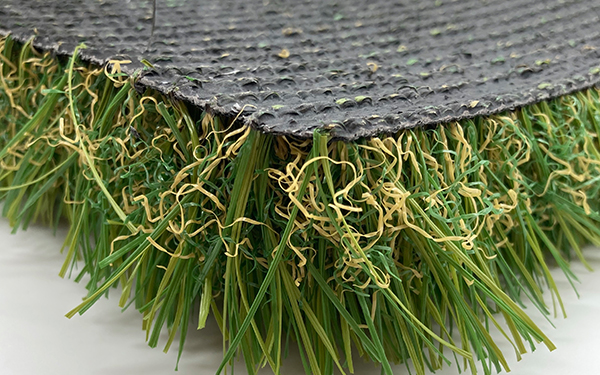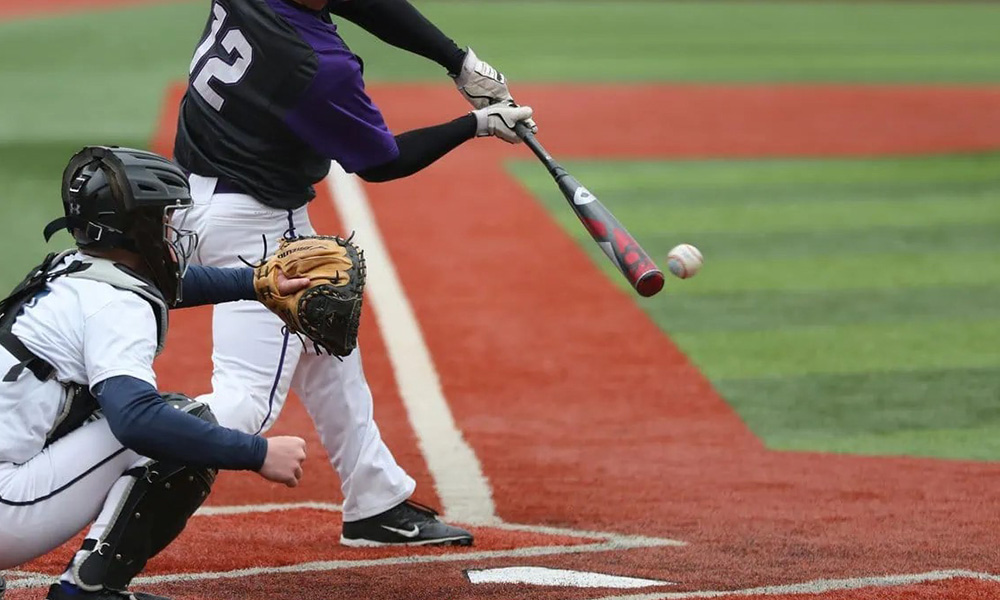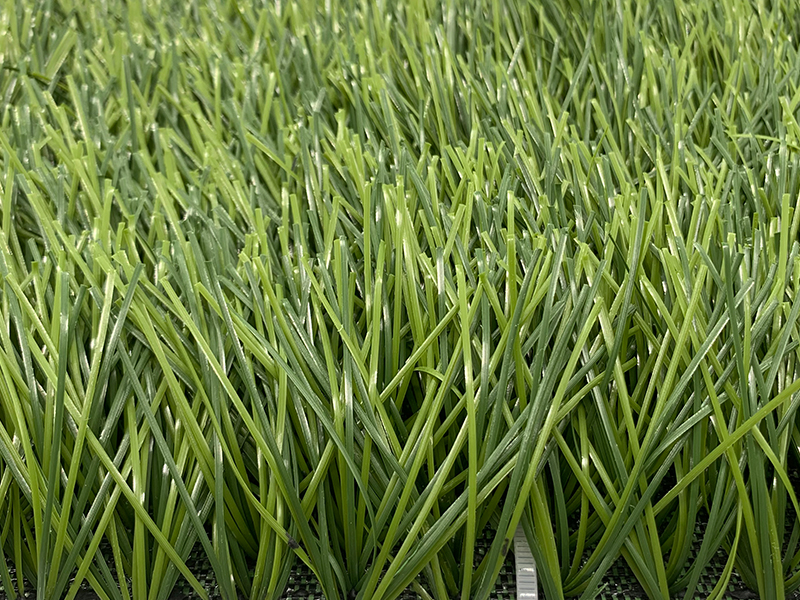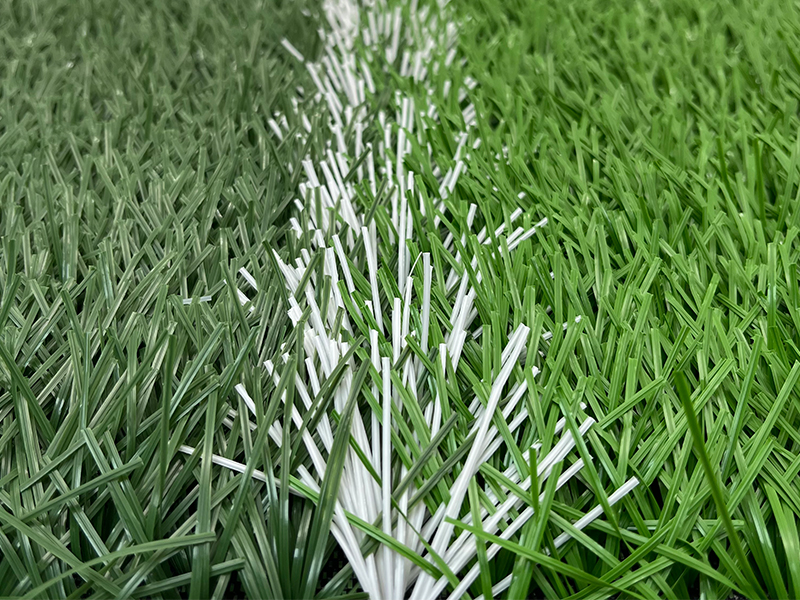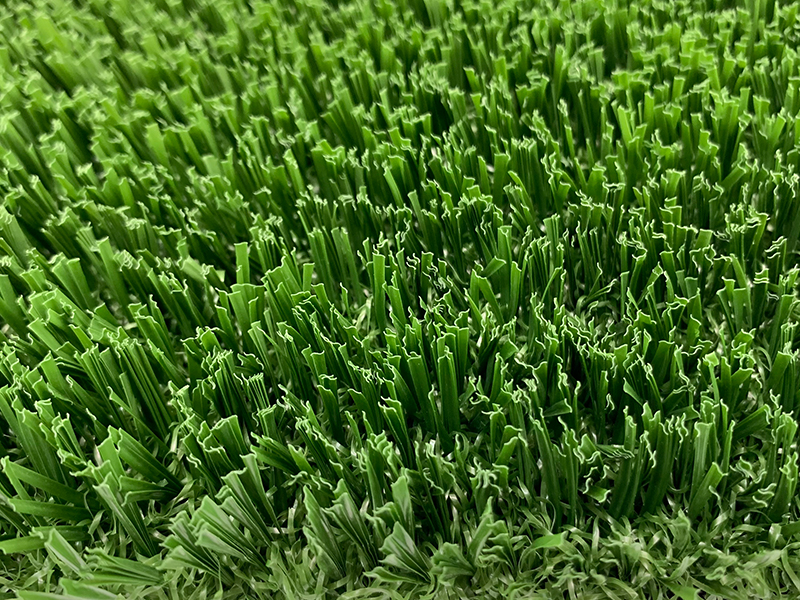Does artificial turf require drainage?
Today, artificial turf is widely used in residential courtyards, commercial plazas and sports venues. Drainage issues have become a focus of concern for many users. So, does artificial turf need drainage? The answer is yes. Even if the artificial turf itself has a certain drainage performance, it is still necessary to evaluate whether an additional drainage system is needed according to the actual site conditions to ensure the service life and functional performance of the turf.
Why must drainage be considered for artificial turf?
To understand the necessity of drainage in artificial turf , it's crucial to dispel a key misconception—equating the waterproof material of artificial turf with automatic drainage. This requires comparing the structural differences between natural and artificial turf:
Natural turf is characterized by its ability to absorb rainwater naturally through the pores in the soil, much like a sponge. Rainwater seeps into the ground gradually through the gaps between soil particles, achieving drainage without the need for additional design. Artificial turf, on the other hand, lacks a soil layer. Its structure is a composite system of "top grass fibers + middle layer filling sand/granules + bottom backing + base fabric." None of these materials possess the natural permeability of soil. Without a dedicated drainage path, rainwater will simply be trapped inside the turf.
From the perspective of water flow principles , rainwater on artificial turf has three main destinations, and the drainage design is precisely to ensure that these three paths are smoothly connected:
- Surface runoff: High-quality artificial turf uses special designs such as "W" and "C" shapes for its grass fibers, and the grass fibers are arranged at different heights to form natural drainage channels, which accelerates the flow of surface rainwater to the edges and reduces the time that water stays in the ground.
- Internal infiltration: This is a crucial step in drainage. Rainwater seeps into the middle layer of filling sand/granules through the gaps in the grass fibers. The gaps between the particles in the filling material guide the rainwater to the bottom.
- Foundation infiltration: Ultimately, rainwater needs to be discharged into the drainage system or underground soil through the drainage holes of the bottom base fabric, the gravel cushion layer under the lawn, or drainage pipes to complete the entire drainage cycle.
However, it's important to note that a lawn's natural drainage capacity is not foolproof . In certain situations , additional drainage systems are necessary to prevent problems. This is especially true in the following cases, where additional drainage design is crucial:
* Low-lying or flat terrain: Rainwater lacks a natural slope to guide it, making it difficult to flow quickly to the edges, and easily forming waterlogged areas in the middle or at the edges of the lawn;
* Heavy or impermeable soil: The underground soil particles are fine and have few pores, which prevents rainwater from seeping in smoothly and may even cause reverse seepage, resulting in water accumulation at the bottom of the lawn;
* In areas with high groundwater levels: When groundwater approaches the surface, it inhibits the infiltration capacity of the lawn system, which may cause the lawn to float and the underlayment to be ruptured and deformed.
* Large-area paving: During periods of concentrated rainfall, the amount of rainwater is large in a short period of time . The drainage holes of the lawn alone cannot withstand the pressure, which can easily lead to water accumulation on both the surface and inside.
In these situations, without installing an additional drainage system, the lawn will become "soaked in water," resulting in odors, loose structure, and other problems that severely affect its appearance and lifespan.
How does the drainage system of artificial turf work?
structure : surface drainage + mid-layer infiltration + base layer discharge.
1. Straw fibers and filler layer
• Drainage design of the grass fibers: High-quality artificial turf often uses "W", "C" or wavy cross-sections for its grass fibers, with staggered lengths . This design creates dense "micro-channels" on the turf surface, allowing rainwater to quickly converge at the edges and reducing surface stagnation. At the same time, the upright grass fibers support the infill layer, preventing rainwater impact from causing the infill material to clump and ensuring surface breathability.
• The porous function of the filling layer: The quartz sand and rubber particles laid in the middle layer form a loose porous structure , which can buffer the impact of instantaneous rainfall and guide rainwater to infiltrate downward through the gaps between the particles, preventing surface water from forming too quickly.
2. Lawn backing and base fabric
• This layer is crucial for the drainage system. The adhesive backing is the key material for securing the grass fibers. If it is a non-porous design, rainwater will be blocked below the infill layer and will not be able to seep down. Therefore, high-quality drainage lawns will have drainage holes evenly distributed in the adhesive backing .
• After rainwater seeps to the bottom of the filler layer, it quickly passes through the adhesive backing through the dense drainage holes and enters the base layer below. At the same time, the base fabric under the adhesive backing can filter out any small particles that may fall out of the filler layer, preventing blockage of subsequent drainage channels, thus playing a dual role of " filtration + reinforcement " .
3. Foundation and subgrade layer
of the foundation layer determines drainage efficiency, including slope, foundation type, and drainage components:
• Foundation slope requirements: Regardless of the type of foundation, a drainage slope of 0.5%-1% must be reserved, and the slope must face the drainage ditch to ensure that rainwater can flow in a directional manner along the slope and avoid the formation of dead corners and water accumulation.
• Characteristics of the three basic types of drainage:
Asphalt base: It has a dense structure and high flatness. It mainly relies on the surface slope to achieve surface runoff drainage. It is suitable for small and medium-sized venues (such as tennis courts and small activity areas). However, drainage gaps need to be reserved at the edges to prevent rainwater from seeping along the sides of the base.
Cement foundation: High strength and strong stability, but poor water permeability. Expansion joints need to be reserved during construction, and drainage pipes should be laid below the expansion joints to allow rainwater to flow into the pipes and be discharged.
Crushed stone foundation: It has the best permeability and is the standard configuration for large sports fields (such as football fields and rugby fields). It is made of crushed stone in layers and compacted. Rainwater can quickly penetrate into the interior of the crushed stone layer and then be discharged through pre-buried drainage pipes or blind ditches.
• Key Component: Drainage Ditches/Edge Drainage Systems. Large sites typically have U-shaped or V-shaped drainage ditches laid along the edges or center of the lawn. These ditches are filled with gravel and covered with geotextile, connecting to the drainage channels in the foundation layer to ultimately direct rainwater into the drainage network or catch basins, ensuring no water stagnation.

Selection of Drainage Schemes in Different Scenarios
1. Situations where complex drainage is not required : small site area, no risk of prolonged immersion.
- Suitable for: small balconies, interior decoration, temporary exhibition venues.
- Solution: Prioritize using perforated turf with a recommended grass fiber length of 30-40mm; the infill layer can be simplified. No additional drainage pipes are required; simply leave a 1% natural slope in the base layer to allow water to flow along the slope to the drain .
2. Situations requiring professional drainage design : large areas, high usage frequency
For rooftop/balcony gardens, outdoor sports fields, courtyards, and landscaping , a professional engineer must be consulted to design a solution.
For example, outdoor sports fields use high-quality crushed stone foundations and blind drainage nets to meet international standard drainage requirements; all scenarios must ensure that the foundation slope reaches 0.5%-1% and that the edge drainage is unobstructed.
FAQ
1. I live in a rainy area, is drainage necessary?
It's essential. In rainy areas, frequent rainfall can easily lead to severe waterlogging, prolonged soaking and aging of the grass fibers, mold growth in the infill layer, and structural damage from freezing in winter. Therefore, turf with drainage holes must be used, along with a permeable base and sufficient slope.
2. I live in an arid region, is it possible to skip drainage?
Not recommended. Even in arid regions, occasional torrential rains can occur, and the instantaneous water accumulation can damage the field. More importantly, if drainage is not maintained, small amounts of irrigation water or rainwater can remain in the bottom layer, potentially causing frost heave in winter and leading to bulging and deformation of the lawn.
3. I've already laid artificial turf, but now there's water accumulation. What should I do?
For water accumulation problems in already laid artificial turf, you can try these remedial measures: First, check and clear the drainage outlets at the edge of the site; then, use a special drilling tool to puncture some drainage holes in areas with severe water accumulation; at the same time, you can dig shallow ditches around the turf and fill them with gravel to guide the water flow; if the water accumulation is caused by uneven base, it may be necessary to partially remove the turf, repair the ground slope, and then repave it.
4. In well-drained lawns, is it easy for the infill to be washed away?
High-quality infill and proper installation can prevent this problem. First, standard quartz sand and rubber granules have weight and friction, making them less likely to be washed away by water. Second, professional installers use a brushing machine to evenly apply the infill to the base of the grass fibers. With a proper drainage design, daily rainfall will not cause significant runoff. Regular maintenance will keep the infill layer stable.

Reasonable drainage to ensure the long-term use of artificial turf
Although the structure of artificial turf has certain drainage functions, a good drainage system is an important guarantee for the long-term and stable operation of the lawn. Especially in sites prone to water accumulation or poor drainage conditions, the appropriate installation of a drainage system can not only prevent the lawn from being damaged, but also improve the use experience and safety of the site. Drainage design should not be ignored. It is the "invisible foundation" to ensure the quality and beauty of the lawn.
